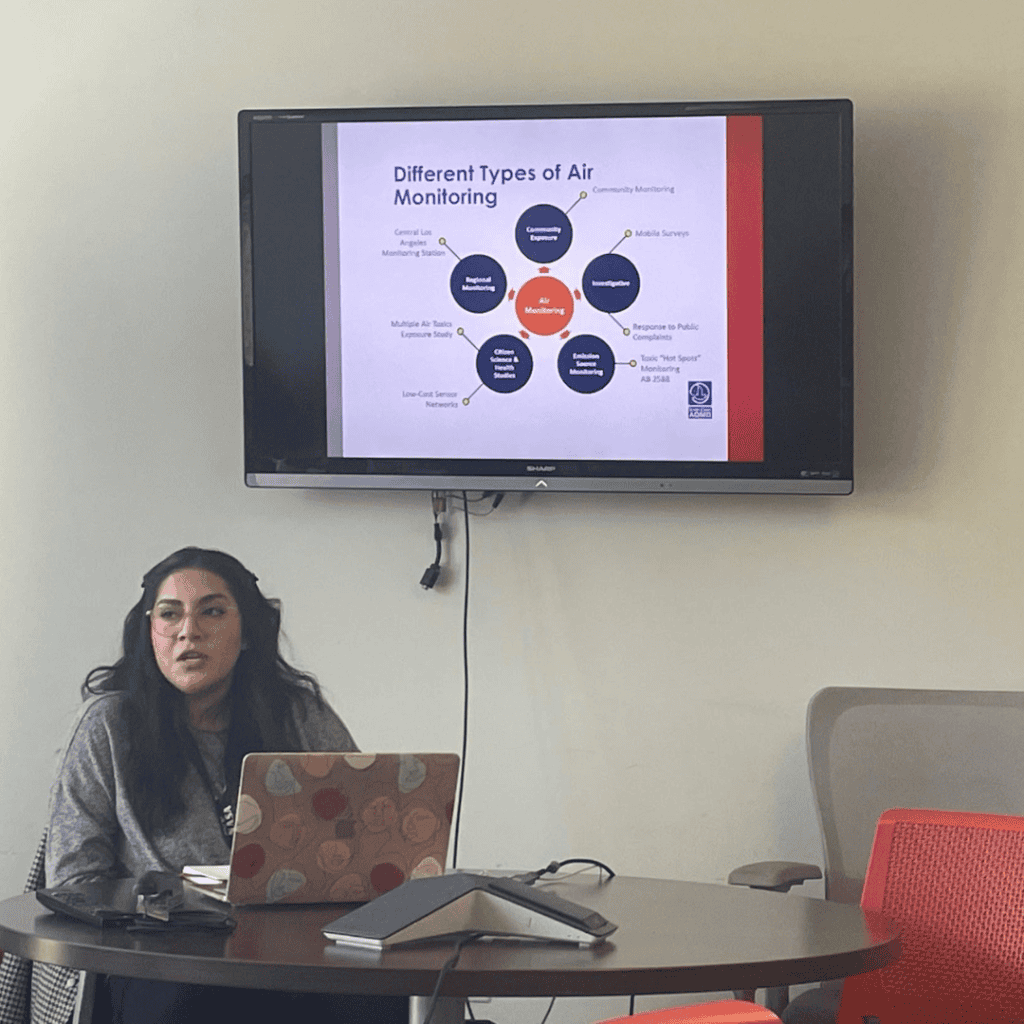Environmental Health Literacy
Environmental health literacy is a fundamental pillar of our organizing efforts that integrate community expertise and bottom up organizing. Our community informed policies and solutions begin at the neighborhood level.

Science & Research

- Community science and engagement consist of organizing activities and education on the myriad of issues affecting fenceline communities.
- These organizing tactics include hyperlocal air pollution data gathering, truck counts, land use and zoning knowledge, community science to action, community hazard mapping activities, and toxic tours.
- These activities all demonstrate a community led approach and. our approach applicable to STEM through an Environmental Justice lens.
Air Pollution
- Regulatory air monitoring that falls under the Clean Air Act does not capture and measure toxic pollution and climate warming emissions in communities of color. That is a limitation of our regulatory system.
- Our communities’ data are utilized by community members and can also be utilized by health institutions, academia, and policymakers, in consultation with RISE4EJ.
- Our resources assist in growing community-driven solutions.
- Community members can utilize air pollution data to reduce exposure on high air pollution days.

